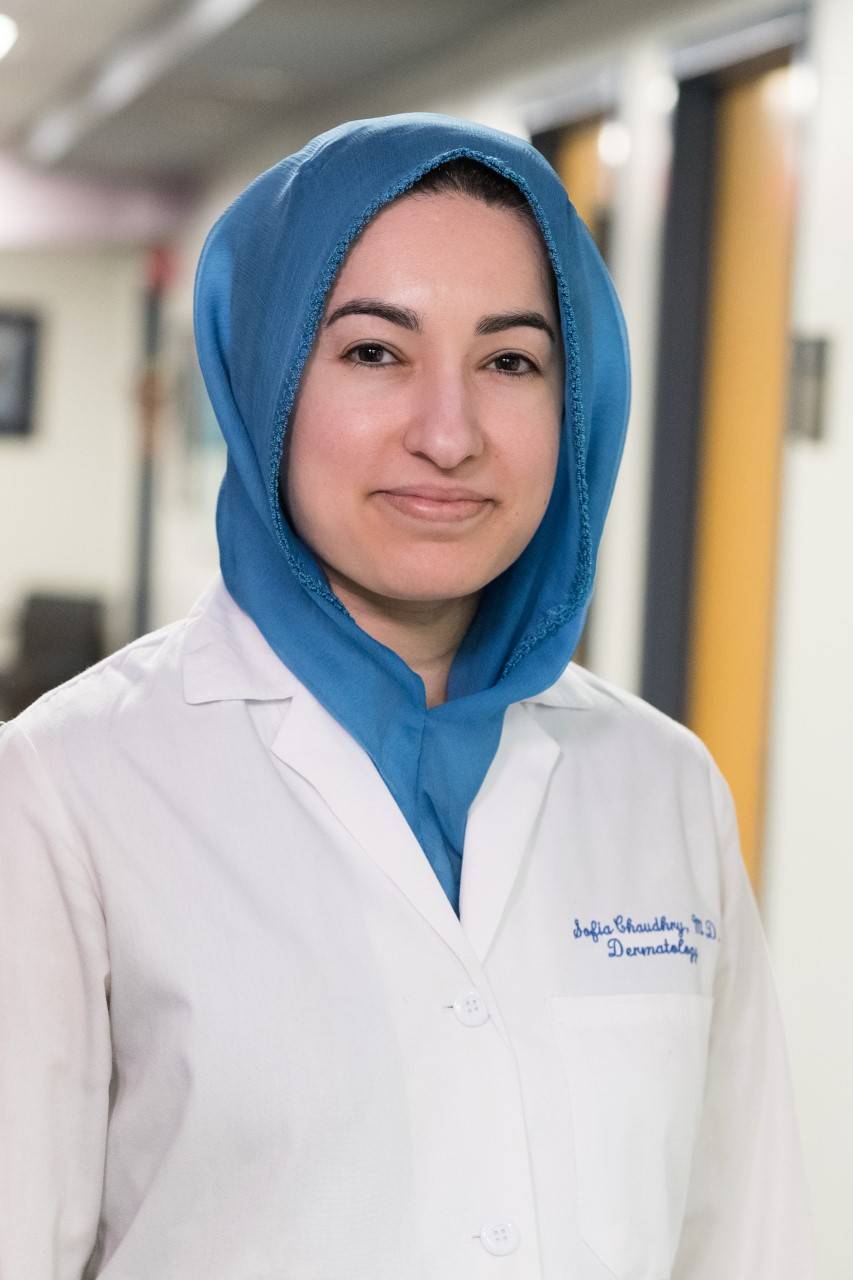With SPOTS Program, SLU Med Students Encourage Skin Cancer Awareness for Young People
Bridjes O'Neil
Communications Specialist
bridjes.oneil@slu.edu
314-282-5007
Reserved for members of the media.
ST. LOUIS — New, unusual-looking growths or changing spots on your skin are important indicators that it is time to see a dermatologist, says Sofia Chaudhry, M.D., associate professor of dermatology at Saint Louis University’s School of Medicine.
Adolescence is a high-risk time for sun damage. Just one blistering sunburn as a child or teen can nearly double your chance of melanoma, a serious skin cancer.

Chaudhry is the director of Sun Protection Outreach Teaching by Students (SPOTS), an educational program in which medical students and dermatology faculty teach school children about skin cancer detection and prevention. With early detection, skin cancer is highly treatable.
SPOTS started as a collaboration between SLU and Washington University in 2006.
Chaudhry and co-lead Laurin Council, M.D., professor of dermatology at Washington University School of Medicine in St. Louis, and their students are raising awareness in this latest PSA that skin cancer impacts everyone, regardless of age and skin color. The video features two patients who developed melanoma at a young age.
Melanoma incidence has significantly increased and is the second most common type of cancer in girls and women between 15-29. With early detection, skin cancer is highly treatable. However, though skin cancer may be less common in patients with darker skin when those with dark skin do develop skin cancer, they’re more likely to have a higher morbidity and mortality rate.
“The five-year melanoma survival rate among Black patients was 70% compared to 95% in white patients,” Chaudhry said. “There is, unfortunately, a significant health disparity that needs to be better addressed.”
Chaudhry is trying to raise awareness that skin cancer can happen to anyone and that everyone needs to check their skin.
Rylee Moody, a third-year medical student at SLU and former SPOTS student lead, was born and raised in Florida. She aims to give people the tools to take control of their health outcomes.
“I have seen many of my family members undergo skin cancer surgery. They're always getting things burnt off at the dermatologist,” Moody said. “If I can have any role to increase awareness so that other people don't have to go through what they went through, then that makes me more than happy.”
Chaudhry was among a group of medical students and dermatology faculty who created the program under the leadership of Stephanie Lickerman, community education director for the Melanoma Hope Network.
SPOTS have spread to over 40 medical schools across the country. To date, the SPOTS chapters in St. Louis have trained more than 600 medical student teachers who have taught over 40,000 middle- and high-school students at over 30 public and private schools.
ABCDE Method
Most skin cancers are found by people themselves, so check your entire body once every month. Unusual growths or spots can sometimes look different on darker skin tones. Use the ABCDE method to know what to look for:
A — Asymmetry
Normal moles are evenly shaped. Melanoma can be uneven – one half may be larger and have a different shape than the other half.
B — Border
Normal moles have smooth, round borders. Melanoma may have irregular, scalloped edges.
C — Color
Normal moles are usually an evenly colored brown or tan color. Melanoma can have multiple colors, such as blue, red, black, or white.
D — Diameter (size)
If a spot is larger than a pencil eraser, about 6 millimeters, get it checked out by a doctor.
E — Evolving
“Evolving” means that a spot on your body is changing. It can also mean “elevated” or raised. If that happens, especially if it’s growing in height, see a doctor immediately.
About SLU School of Medicine
Established in 1836, Saint Louis University School of Medicine has the distinction of awarding the first medical degree west of the Mississippi River. The school educates physicians and biomedical scientists, conducts medical research, and provides health care on a local, national and international level. Research at the school seeks new cures and treatments in five key areas: infectious disease, liver disease, cancer, heart/lung disease, and aging and brain disorders.

















